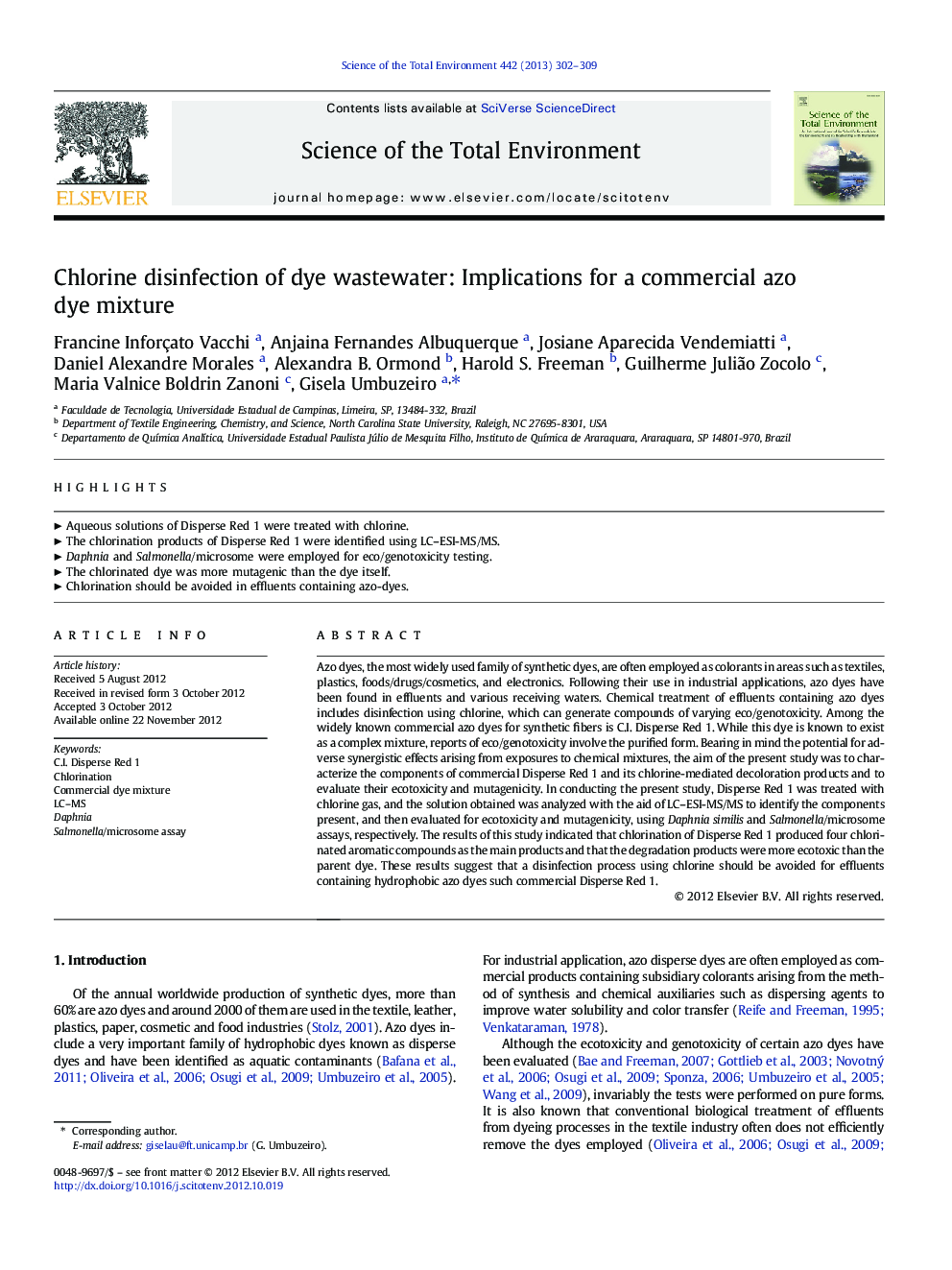| Article ID | Journal | Published Year | Pages | File Type |
|---|---|---|---|---|
| 4429003 | Science of The Total Environment | 2013 | 8 Pages |
Azo dyes, the most widely used family of synthetic dyes, are often employed as colorants in areas such as textiles, plastics, foods/drugs/cosmetics, and electronics. Following their use in industrial applications, azo dyes have been found in effluents and various receiving waters. Chemical treatment of effluents containing azo dyes includes disinfection using chlorine, which can generate compounds of varying eco/genotoxicity. Among the widely known commercial azo dyes for synthetic fibers is C.I. Disperse Red 1. While this dye is known to exist as a complex mixture, reports of eco/genotoxicity involve the purified form. Bearing in mind the potential for adverse synergistic effects arising from exposures to chemical mixtures, the aim of the present study was to characterize the components of commercial Disperse Red 1 and its chlorine-mediated decoloration products and to evaluate their ecotoxicity and mutagenicity. In conducting the present study, Disperse Red 1 was treated with chlorine gas, and the solution obtained was analyzed with the aid of LC–ESI-MS/MS to identify the components present, and then evaluated for ecotoxicity and mutagenicity, using Daphnia similis and Salmonella/microsome assays, respectively. The results of this study indicated that chlorination of Disperse Red 1 produced four chlorinated aromatic compounds as the main products and that the degradation products were more ecotoxic than the parent dye. These results suggest that a disinfection process using chlorine should be avoided for effluents containing hydrophobic azo dyes such commercial Disperse Red 1.
► Aqueous solutions of Disperse Red 1 were treated with chlorine. ► The chlorination products of Disperse Red 1 were identified using LC–ESI-MS/MS. ► Daphnia and Salmonella/microsome were employed for eco/genotoxicity testing. ► The chlorinated dye was more mutagenic than the dye itself. ► Chlorination should be avoided in effluents containing azo-dyes.
